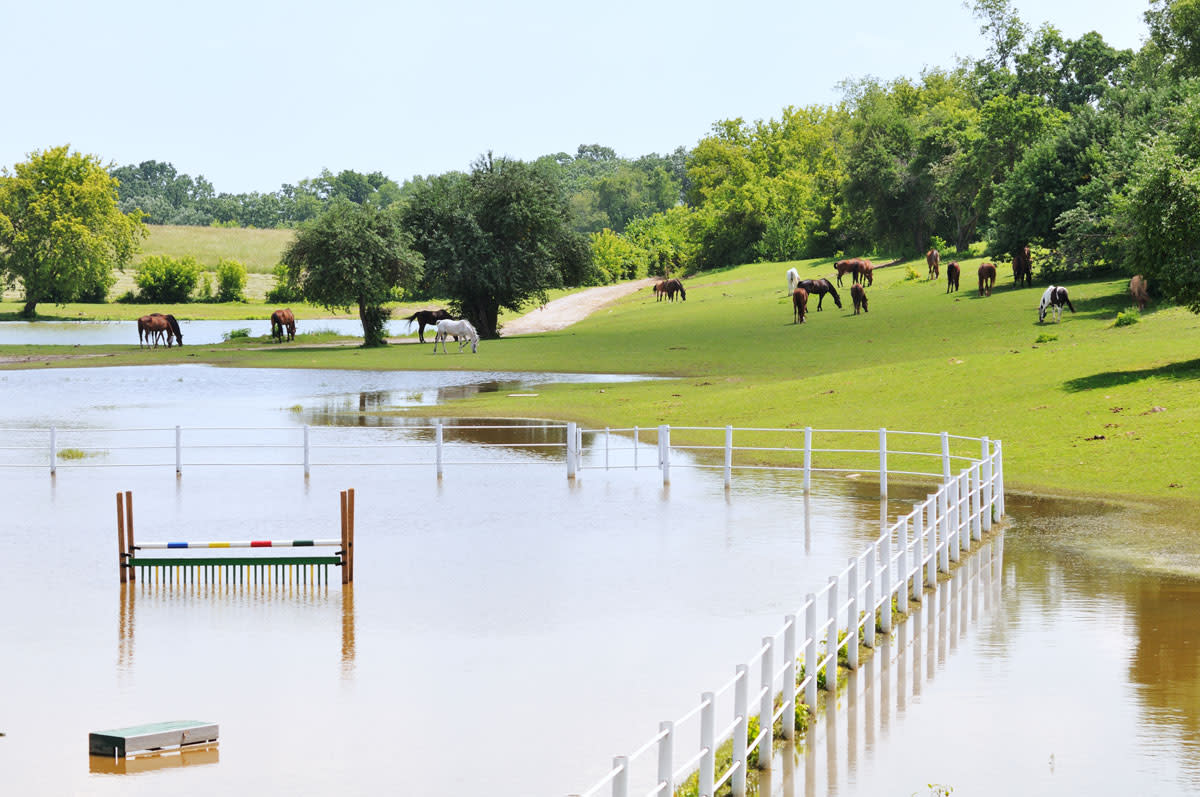
The Foundation for the Horse gathered rescue specialist Dr. John Madigan along with Drs. Wally Liberman, Wesley Bissett, Claufia Sonder and Leslie Easterwood to discuss the Veterinarians’ Role in Emergency Management during the 2021 AAEP Convention.
Huh, Who’d Have Thunk?
Part Two: Disaster Management at the AAEP
My first official stop at this year’s AAEP convention was a 3 ½-hour session on the veterinarian’s role in emergency management. In preparation for this event, I thought about emergency preparedness while I was packing. In case of an emergency at AAEP, what would I, a member of the media, need to survive?
This. This is what I need to survive in an emergency at the AAEP 67th Annual Convention & Trade Show:

Now, before you judge, remember that we all have our own ways of dealing with stress. Mine is eating celery. While this two-bag-a-day habit keeps me sane, I know that the incessant, obnoxious crunching drives my support staff a little nuts. What also infuriates my predominantly Gen Z team is the number of tabs I keep open on my laptop. What they fail to understand is that I need all of them open to easily pull up important articles in case of an emergency. I’ve offered my team celery to relieve their own stress, but they are unappreciative of my efforts.
Putting aside concerns for my own emergencies, I settled in to hear about equine emergency management. I was wondering what I was going to learn that would make me think “Huh, who’d have thunk?” I was a little nervous I wouldn’t find anything to share. I mean, we’ve all managed our fair share of emergencies. We’re pros, right?
Wrong.
From the second the panelists were introduced and began sharing their experiences, I was hooked. It turns out the presentation wasn’t actually about emergency management but rather disaster management following floods, fires, earthquakes, etc.
Five experienced panelists—Wesley Bissett, Leslie Easterwood, Wally Liberman, John Madigan and Claudia Sonder—shared heartbreaking front-line stories. Their vividly detailed stories coupled with graphic photos painted an extremely clear and somewhat shocking picture of what disaster management truly looks like.
Of all the do’s and don’ts of disaster medicine relayed during the session, one of the most important takeaways the panelists highlighted was to turn the chaos to calm by working as part of a pre-organized system. They repeatedly emphasized how we need to follow the system’s protocols in the face of a disaster to achieve the predetermined goals, be it rescue or recovery. The panelists unanimously begged veterinarians to not “go rogue.”
“If the road is closed because the water is too high or there is a fire, don’t think, ‘I know a way around it.’ That is contributing to the chaos,” relayed the panelists.
The no-holds-barred descriptions and images of disaster management seemed at certain points designed to scare veterinarians away from wanting to participate. But then the panelists began showing pictures of rescuers lovingly caring for the chickens and ducks rescued alongside the horses. They laughed while recalling the goats leaping from rescue boats into the very water they were just rescued from, and how difficult it was to restrain the herding dogs from rounding up all the lost, confused animals.
At this point, we were about 2 ½ hours into this unanticipated emotional rollercoaster. Without missing a beat, the panelists then showed us tear-jerking pictures of owners being reunited with their horses.
“When you reunite a person with their pet—regardless of what sound they make—moo, meow, woof or neigh—you have rescued that owner, too,” one of the panelists said, choked with emotion.
Without allowing this warm feeling to seep into our bones for a moment too long, the panelists again changed directions, pointing out the toll disaster medicine takes on a person.
One panelist warned, “I don’t care how tough you are or how much you’ve seen, if you get involved in emergency response there will be baggage.”
Another added, “You will see things that you hope to never see again, and they will profoundly affect you.”
While outsiders might have taken their leave at this point, the room remained packed. One of the attendees pointed out that veterinarians are do-gooders. We volunteer. We are compelled to help. And this is why so many of us eagerly participate in disaster management.
But after the disaster has been contained, the baggage must be dealt with. How? Check in with the colleagues with whom you were “in battle,” use first-responder resources, seek counseling from experts with PTSD experience, use all of the readily available well-being resources, and help others struggling with their own trauma.
Do not rely on celery to get you through.
For those of you interested in learning more about disaster management, take a peek at the new AVMA veterinary first-responder certificate program and attend Tuesday’s presentation “How to get a horse out of a jam: rescue approaches” at 10 a.m.
And don’t forget to check in tomorrow to find out what might make you say, “Huh, who’d have thunk?”
About ADM Animal Nutrition and Cellarator Advantage
Demands of exercise are a stressor for the performance horse. Heavy work can overwhelm the body’s natural ability to deal with oxidative stress, which can damage muscle proteins, lipids and DNA, release pro-inflammatory cytokines leading to muscle pain, and damage the mitochondrial membrane decreasing energy production. Cellarator Advantage RECOVERY+ by ADM Animal Nutrition™ was designed to help the performance horse combat the stress of exercise. To learn more, watch this video and come visit with the ADM experts at AAEP, booth #601/700.








